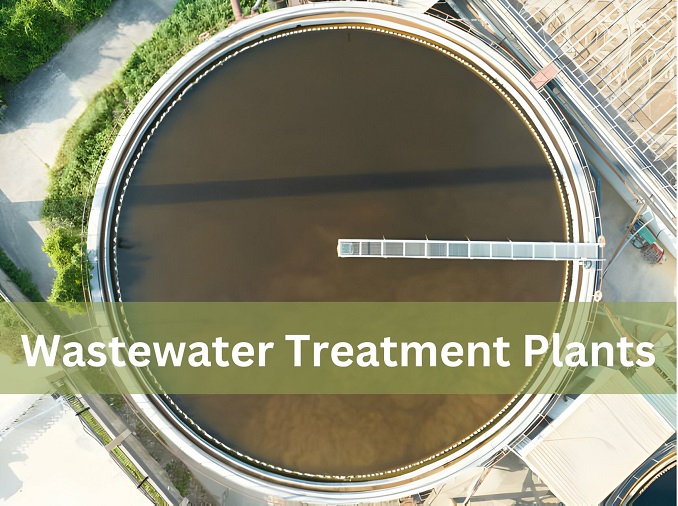Wastewater treatment plants play a critical role in keeping our environment clean and healthy. One of the most essential systems used in these plants is the clarifier system, which helps to separate solids from liquids and ensure the effluent water is clear and safe for the environment.
In this guide, we will provide you with a comprehensive understanding of clarifier systems, including their functions, types, and significance in water treatment. This will help you better understand why they are important in keeping our environment safe and clean.

What is a Clarifier System?
A clarifier system, also known as a sedimentation tank, serves as a fundamental component in wastewater treatment plants, facilitating the separation of suspended solids from liquid effluent through sedimentation. This process aids in achieving the desired clarity and purity of treated water before it is discharged into the environment.
How Does It Function?
The functioning of a clarifier system is ingeniously simple yet remarkably effective. Upon entry into the clarifier tank, wastewater undergoes a quiescent phase, allowing gravity to initiate the separation process. The heavier solids present in the effluent gradually settle at the bottom of the tank, forming a sludge layer, while the clarified water rises to the surface. This clarified water is then collected and subjected to further treatment processes to meet regulatory standards.
Types of Clarifier Systems
Clarifier systems are categorised into various types based on their operational mechanisms and applications within wastewater treatment plants. Two primary classifications are:
Primary Clarifier
Positioned at the initial stage of wastewater treatment, primary clarifiers are tasked with the preliminary removal of settleable organic and inorganic solids from raw sewage. These solids, comprising grit, sand, and larger organic matter, settle at the bottom of the tank, forming a sludge layer. The clarified effluent, relatively free from suspended solids, undergoes subsequent treatment processes for further purification.
Secondary Clarifier
Following primary treatment processes, secondary clarifiers come into play to facilitate the separation of biological sludge, microbial flocs, and remaining suspended solids from the treated wastewater. This stage is integral to the biological treatment of sewage, where microorganisms aid in the breakdown of organic contaminants. Secondary clarifiers ensure the efficient removal of these microorganisms, allowing the clarified effluent to meet stringent quality standards before discharge.
Features
- Efficient Sedimentation: Clarifier systems are designed to facilitate the efficient settling of suspended solids in wastewater, ensuring the separation of contaminants from the treated effluent.
- Optimised Design: With advancements in engineering and design, modern clarifier systems boast optimised configurations, allowing for enhanced hydraulic performance and sedimentation efficiency.
- Sludge Removal Mechanisms: Integrated sludge removal mechanisms, such as sludge rakes and skimmers, ensure the timely extraction of settled solids from the clarifier tank, preventing the accumulation of sludge and maintaining operational efficiency.
- Flexible Configurations: Clarifier systems are available in various configurations, including circular, rectangular, and inclined plate settlers, catering to the diverse needs and spatial constraints of wastewater treatment plants.
- Advanced Control Systems: Incorporation of advanced control systems enables real-time monitoring and adjustment of clarifier operation parameters, enhancing process stability and facilitating optimal performance.
- Corrosion Resistance: Using corrosion-resistant materials in clarifier construction ensures longevity and reliability, minimising maintenance requirements and operational downtime.
- Energy-Efficient Design: Modern systems are engineered to minimise energy consumption through efficient hydraulic design and the utilisation of low-energy consumption components, contributing to sustainability and cost-effectiveness.
- Scalability: Scalable design features enable the adaptation of clarifier systems to varying flow rates and treatment capacities, providing operational flexibility and accommodating future expansion requirements.
Applications
Municipal Wastewater Treatment
Clarifier systems find widespread application in municipal wastewater treatment plants, where they play a crucial role in the removal of solids and organic contaminants from sewage before discharge into water bodies or reuse for non-potable purposes.
Industrial Effluent Treatment
In industrial sewage treatment plants, clarifier systems are employed to treat effluent streams generated from various industrial processes, facilitating the removal of pollutants and ensuring compliance with regulatory standards.
Read More: Industrial Wastewater Treatment is No More Optional!
Water Reclamation and Recycling
Clarifier systems are integral to water reclamation and recycling initiatives, where they aid in the purification of wastewater for reuse in industrial processes, irrigation, and other non-potable applications, thereby conserving freshwater resources.
Stormwater Management
In stormwater treatment facilities, these systems are utilised to remove sediment and debris from stormwater runoff, preventing the contamination of water bodies and minimising the risk of flooding and environmental degradation.
Agricultural Wastewater Treatment
They play a vital role in agricultural wastewater treatment, facilitating the removal of nutrients, suspended solids, and pathogens from agricultural runoff and livestock waste, mitigating water pollution and safeguarding environmental health.
Residential and Commercial Developments
They are commonly employed in residential and commercial developments with decentralised wastewater treatment systems, providing onsite treatment of sewage and wastewater before discharge or reuse.
Mining and Resource Extraction
In mining and resource extraction industries, clarifier systems are utilised for the treatment of wastewater generated during extraction, processing, and beneficiation operations, aiding in the removal of suspended solids and contaminants to meet regulatory requirements.
Benefits
Clarifier systems serve as indispensable assets in wastewater treatment plants, offering a multitude of benefits that contribute to enhanced operational efficiency, improved water quality, and cost savings. Below are some key benefits:
Enhanced Sedimentation:
Clarifier systems facilitate the efficient settling of suspended solids present in wastewater, leading to enhanced sedimentation rates and improved solids removal efficiency. This results in the separation of contaminants from the treated effluent, ensuring the production of clearer and cleaner water.
Increased Efficiency:
By streamlining the sedimentation process, these systems significantly enhance the overall efficiency of wastewater treatment plants. The optimised design and operational mechanisms of clarifiers minimise hydraulic disturbances and maximise particle settling, thereby increasing treatment capacity and throughput.
Improved Water Quality:
The effective removal of suspended solids, organic matter, and other contaminants by clarifier systems results in a notable improvement in water quality. Treated effluent from clarifier units exhibits reduced turbidity, lower levels of pollutants, and enhanced clarity, meeting stringent regulatory standards for discharge or reuse.
Better Chemical Treatment:
They complement chemical treatment processes by facilitating the removal of coagulated flocs and precipitated solids from the treated wastewater. This allows for better utilisation of chemical additives, such as coagulants and flocculants, leading to optimised chemical dosing, reduced chemical consumption, and improved treatment efficacy.
Cost Savings:
The implementation of these systems in wastewater treatment plants results in significant cost savings over the long term. By improving treatment efficiency and water quality, clarifiers reduce the need for costly downstream treatment processes and minimise the risk of environmental non-compliance fines. Additionally, reduced energy consumption, maintenance requirements, and chemical usage contribute to overall operational cost savings.
FAQs
As businesses operating wastewater treatment plants seek to optimise their processes and ensure compliance with regulatory standards, it’s essential to address common queries regarding clarifier systems. Below are answers to frequently asked questions:
Q: What are the by-products of a clarifier system?
A: The primary by-products of a clarifier system include settled solids, also known as sludge or biosolids, and clarified effluent. The sludge collected at the bottom of the clarifier contains organic and inorganic matter removed from the wastewater during the sedimentation process. This sludge can undergo further treatment, such as dewatering and digestion, for disposal or reuse. The clarified effluent, free from suspended solids, is discharged or subjected to additional treatment processes before reuse or discharge.
Q: What is the purpose of a clarifier system?
A: The primary purpose of a clarifier system in a wastewater treatment plant is to facilitate the separation of suspended solids from liquid effluent through sedimentation. By allowing gravity to initiate the settling of solids, clarifiers help achieve clearer and cleaner water, meeting regulatory standards for discharge into the environment or reuse in various applications. These systems play a vital role in improving water quality, enhancing treatment efficiency, and ensuring the proper functioning of downstream treatment processes.
Q: How do I know if my clarifier system is working properly?
A: Several indicators can help assess the proper functioning of a clarifier system. These include monitoring the clarity of the effluent, observing the sludge blanket level, and assessing the hydraulic performance of the clarifier. Regular inspections, measurements of influent and effluent parameters, and analysis of sludge characteristics can provide insights into clarifier performance. If there are any differences from the expected performance indicators, it may be necessary to investigate further and take corrective action to ensure that the clarifier system is operating optimally.
Q: How much does it cost to install and maintain a clarifier system?
A: The cost of installing and maintaining a clarifier system can vary depending on factors such as the size and capacity of the clarifier, the complexity of the treatment process, and site-specific conditions. Initial installation costs typically include equipment procurement, civil works, and labour expenses. Ongoing maintenance costs encompass routine inspections, equipment servicing, sludge disposal, and energy consumption. While the upfront investment may be significant, proper maintenance and optimisation can help mitigate long-term operational costs and maximise return on investment.
Q: Is it possible to transfer the sludge from my clarifier straight into my filter press?
A: Yes, in many cases, the sludge collected from a clarifier can be pumped directly into a filter press for further dewatering and solid-liquid separation. Filter presses are commonly used downstream of clarifier systems to remove excess moisture from the sludge, reducing its volume and facilitating disposal or reuse. However, it is essential to ensure that the sludge characteristics and pump specifications are compatible with the filter press requirements to achieve optimal dewatering performance and operational efficiency.
Q: What type of routine maintenance is needed for a clarifier?
A: Routine maintenance for a clarifier system typically includes inspections, lubrication of mechanical components, cleaning of weirs and baffles, and monitoring sludge blanket levels. Additionally, calibration of instrumentation, such as level sensors and flow meters, and periodic testing of influent and effluent parameters are essential to assess clarifier performance and identify any issues promptly. Regular preventive maintenance helps minimise downtime, optimise treatment efficiency, and prolong the operational lifespan of the system.
Q: Will a clarifier remove grease and oil?
A: Clarifier systems are primarily designed to remove suspended solids from wastewater through sedimentation and settling processes. While some grease and oil may be captured within the sludge layer during clarifier operation, significant amounts of grease and oil may require additional treatment steps, such as skimming or flotation, to achieve effective removal. Depending on the composition and concentration of grease and oil in the wastewater, supplementary treatment processes may be necessary to ensure compliance with regulatory standards and prevent adverse impacts on downstream treatment units. Consider consulting water treatment plant experts for tailored solutions.
Q: What happens if the wastewater flow rate exceeds the clarifier’s capacity?
A: Exceeding the maximum flow rate capacity of a clarifier can lead to hydraulic overloading, compromising clarifier performance and treatment efficiency. In such instances, the clarifier may experience reduced sedimentation rates, increased turbulence, and carryover of solids into the effluent. To mitigate the effects of hydraulic overloading, operational adjustments, such as reducing influent flow rates or increasing clarifier detention time, maybe implemented temporarily. Long-term solutions may involve retrofitting or upgrading the clarifier system to accommodate higher flow rates and ensure reliable operation under varying hydraulic conditions.
We Offer Customized Water Treatment Plant Solutions
Are you looking to improve the efficiency, water quality, and operational costs of your wastewater treatment plant? Look no further than our tailored solutions. At Cleantech Water, our team of experts is dedicated to designing customised water treatment plant solutions customised to your specific requirements and objectives. We understand that every plant is unique, and our solutions are designed to enhance your plant’s performance in a way that aligns with your individual needs.
From the initial conceptualisation to the final implementation, we bring innovation, efficiency, and sustainability to every step of the process. Our tailored solutions are designed to unlock the full potential of your water treatment plant, helping you achieve new levels of performance, reliability, and environmental stewardship.
Our team of experts specialises in a range of services, including enhancing sedimentation efficiency, improving water quality, and optimising operational costs. We take pride in our ability to create customised solutions tailored to your specific requirements.
Let us partner with you to transform your wastewater treatment processes and propel your business towards a brighter, cleaner future. Contact us at +91-9558996411 or write to us at info@cleantechwater.co.in to learn more about how our tailored solutions can help your wastewater treatment plant unlock its full potential.

